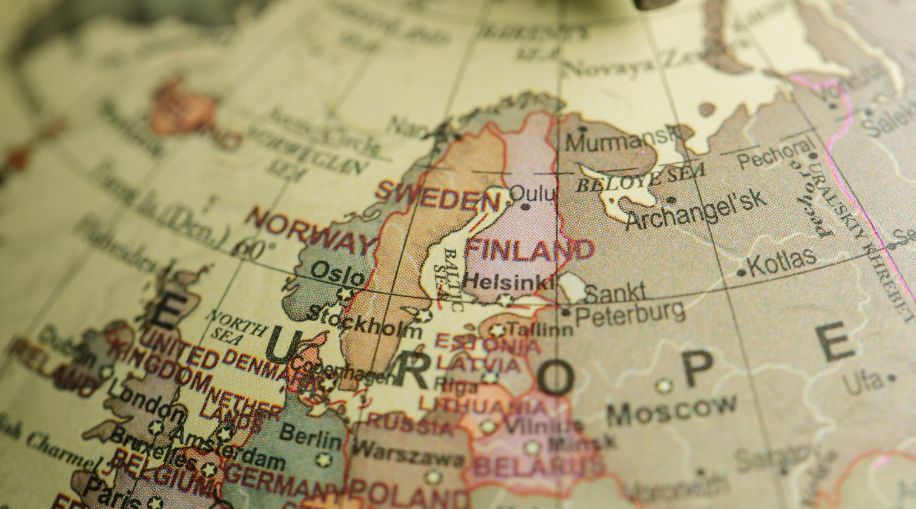Your Ultimate Blueprint
Planning a trip to Europe can be an exhilarating adventure. The key to a successful trip is planning and preparing adequately.
Hop-On Hop-Off Bus Tours
Hop-on hop-off bus tours are a fantastic, budget-friendly way to see Europe’s cities without the hassle of figuring out transportation for every landmark. These tours allow you to pay a single price to explore major city attractions, hopping on and off as you wish. Most big cities across Europe, like Paris, Rome and Barcelona, offer these services, with bus routes that stop at famous sites like the Eiffel Tower, the Colosseum or the Sagrada Familia.
For travelers, this option is ideal because it combines transportation and sightseeing in one. Many bus tours also include audio guides in multiple languages, so you can learn about each attraction as you travel. By choosing a hop-on hop-off bus tour, you get the flexibility to stay longer at places you love, skip others and save time on planning. Plus, it’s generally cheaper than paying for separate tickets to get around, making it a top choice for budget-conscious travelers looking to experience Europe’s highlights.
A Step-by-Step Guide to Planning Your European Trip
Step 1: Establish Your Budget
Before you start fantasizing about Parisian sunsets or Venetian gondola rides, it's important to have a clear idea of how much you're willing to spend. Your budget will dictate everything from the length of your trip to the type of accommodation and transportation you can afford. Don't forget to factor in meals, attractions, souvenirs and unexpected costs.
Step 2: Decide on the Duration and Timing
The length of your trip will depend largely on your budget, but also on your available vacation days. Keep in mind that Europe has various weather patterns and seasonal events. If you prefer warmer weather and don't mind larger crowds, summer is ideal. However, visiting in the off-peak seasons like spring or fall can mean fewer tourists and often milder weather.
Step 3: Choose Your Destinations
Europe is diverse, and its countries offer different cultures, languages and experiences. Research the places that intrigue you the most and consider how much time you want to spend in each destination. It's wise to resist the temptation to see everything in one go. Instead, focus on a few places and enjoy them thoroughly.
Step 4: Map Your Route
Once you've narrowed down your destinations, decide on the most logical route. You might choose a loop that starts and ends at the same airport or a one-way journey with different entry and exit points. Consider geographical proximity and transportation options to minimize travel time between locations.
Step 5: Plan Your Transportation
Europe boasts an efficient and extensive public transportation system, including budget-friendly flights, trains and buses. Decide whether you'll need single tickets or if it's worth getting a rail pass like Eurail or Interrail. Remember that booking in advance can save you money, especially for flights and high-speed trains.
Step 6: Sort Out Accommodation
Now that your destinations and routes are clear, you can book accommodations. Options range from hostels and budget hotels to luxury resorts and rental apartments. Location is key—staying centrally can save you time and transportation costs. Be sure to read reviews and book early to secure the best deals.
Step 7: Check Passport and Visa Requirements
Ensure your passport is valid for at least six months beyond your projected return date. Depending on your nationality, you may need a visa to visit certain European countries. Check the visa requirements well in advance of your trip to allow ample time for processing if necessary.
Step 8: Get Travel Insurance
Travel insurance is a crucial safeguard against unforeseen incidents such as medical emergencies, trip cancellations or lost luggage. Read policy details carefully to understand what's included and make sure you're covered for any activities you plan to do, like adventure sports.
Step 9: Create a Rough Itinerary
Draft a day-to-day itinerary, but keep it flexible. Include must-see attractions, but also allow time for relaxation or spontaneous activities. Book tickets for popular attractions ahead of time to avoid long queues.
Step 10: Pack Smart
Packing for Europe requires thought. Layers are key as the weather can be unpredictable. Comfortable walking shoes are a must and remember to bring any necessary electronics and chargers, travel adaptors and medications. Travel light if you can, as this makes moving between destinations easier.
Most Popular Places to Visit in Europe
Looking for suggestions on which places to visit? Here are some of the most popular cities in Europe.
1. Paris, France
The "City of Light" is synonymous with romance, art and gastronomy. Marvel at iconic landmarks like the Eiffel Tower, the Louvre Museum and Notre Dame Cathedral. Stroll down Champs-Élysées, enjoy a croissant at a sidewalk café and explore the charming neighborhood of Montmartre.
2. Rome, Italy
Rome is a living museum with a history spanning over 2,500 years. Its ancient sites, including the Colosseum, Roman Forum and Pantheon, are a must-see. Don't miss Vatican City with St. Peter's Basilica and the Vatican Museums, home to Michelangelo's Sistine Chapel.
3. Barcelona, Spain
Known for its unique architecture, Barcelona is the realm of Antoni Gaudí. Park Güell and the unfinished Sagrada Família are enchanting highlights. Soak up the sun on the Mediterranean beaches or wander through the Gothic Quarter for a glimpse of the city's medieval past.
4. Amsterdam, Netherlands
Famous for its canals, tulips and cycling culture, Amsterdam boasts a laid-back atmosphere. The Anne Frank House, Van Gogh Museum and Rijksmuseum are top cultural draws. Don't forget to explore the historic canal rings, which are a UNESCO World Heritage Site.
5. London, United Kingdom
A cosmopolitan city with a rich heritage, London offers an array of cultural experiences. Visit the British Museum, take a spin on the London Eye or watch the Changing of the Guard at Buckingham Palace. From Shakespeare's Globe Theatre to the shops of Oxford Street, there's something for everyone.
Making Memories in Europe
Remember to allow for some flexibility and spontaneous exploration – some of your best memories could come from unplanned adventures. Happy travels!

